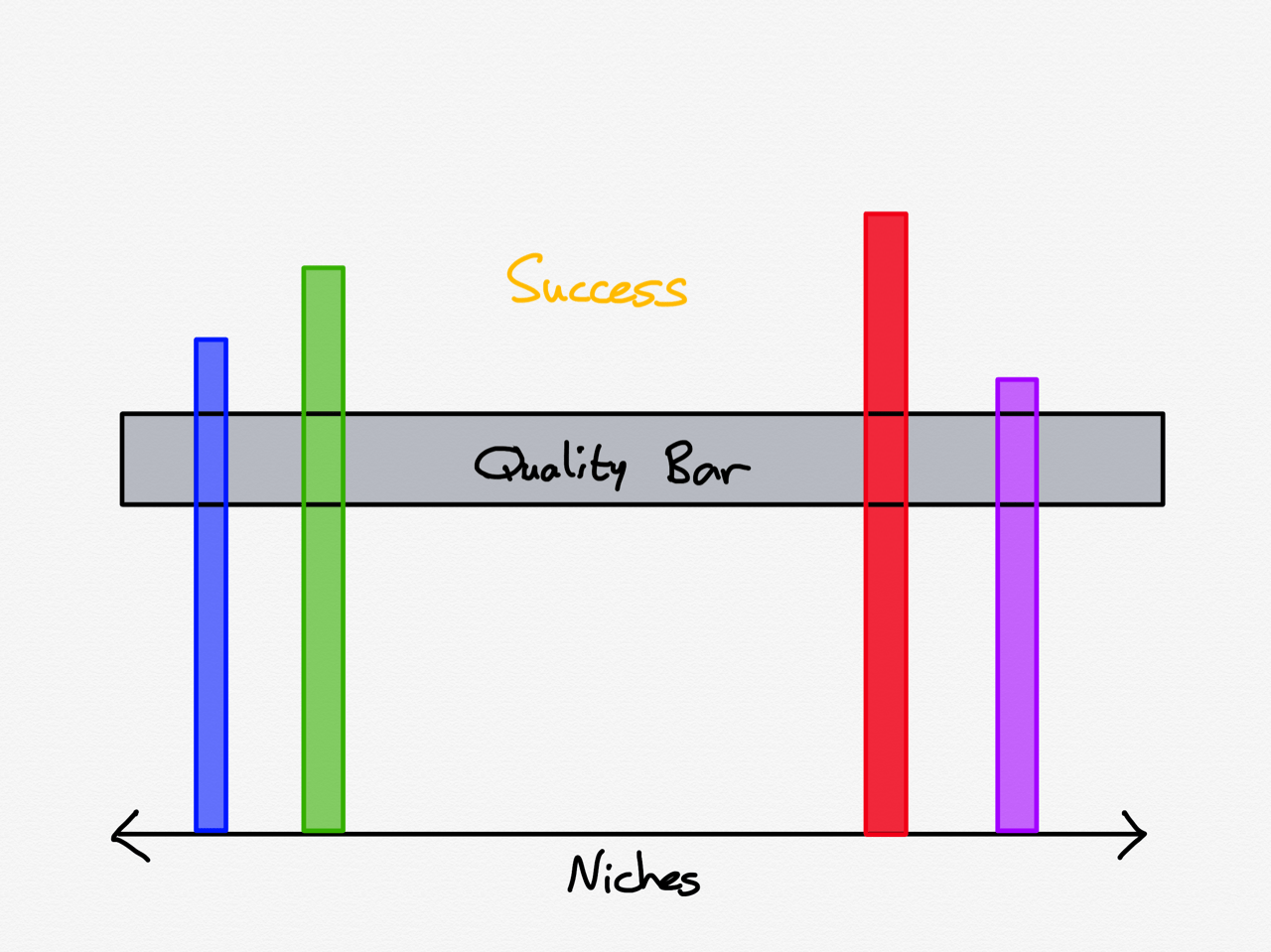Phish and digital content strategy
· 6 minute read

Let’s start by getting the tropes out of the way: drugs, hippies, Ben & Jerry’s, “the Grateful Dead were better,” that “Gin and Juice” cover from Napster with the wrong MP3 metadata. And say what you will about their music; love it, hate it, or have no opinion whatsoever1, this essay isn’t really about music. It’s about a unique–and I have to think incredibly successful–digital content strategy unlike anything else I’ve ever seen, and seemingly nearly impossible to replicate.
Before we dig in, let’s jump back a couple of decades.
In the heyday of the aforementioned Napster and during the transition from physical media to streaming video, the music and film industries attempted to combat piracy by clamping down as hard as possible with restrictive DRM, unskippable DVD preambles, and exorbitant lawsuits. Pundits and industry observers bemoaned this approach, countering that an effective defense wouldn’t be through draconian restrictions but by competing on quality and convenience; that DRM and similarly user-hostile approaches would lead to more piracy in service of a better user experience irrespective of cost. That the way to win was by charging a fair price for a superior product.
If services like Netflix and Spotify have proven this to be true2, Phish has taken it to an extreme. While most bands would consider their studio records to be more canonical than their live recordings, the opposite is true for Phish. Yet Phish embraces the recording and sharing of their live music rather than trying to stop it–you can legally listen to hundreds of Phish shows right now just by going to this website.
This isn’t because they don’t want you to pay for their music, however. To the contrary, their LivePhish website competes on quality and convenience by making every show since 2002 available:
- In lossless audio quality, straight from the soundboard
- Literally within minutes of each concert ending3
- To either download or stream (via web, iOS/Android/Apple TV apps, Sonos, etc.)
- To purchase either à la carte or through a monthly subscription
- With beautiful, thoughtful, artwork unique to that show or tour
Oh, and they also broadcast the live video streams of these shows. In high-definition. With extremely high-quality camerawork. For a fair price, naturally.
At this point, you might be thinking that this doesn’t actually sound particularly lucrative. After all, if you’ve heard one live show haven’t you heard them all?
This would be the case for most bands but not for Phish. Phish plays with an improvisational style which means no two shows are ever the same. If this sounds like an exaggeration, it isn’t. All four band members are virtuosic in their own right, but have also been playing together for almost 40 years as of this writing. This gives them both an enormous repertoire to draw from4, plus the ability to freely experiment with near any track without veering off the rails in a way that often feels impossible.
So that’s the playbook, unemulatable as it may be: pick a musical genre that lends itself incredibly well to improvisation, spend four decades mastering it, stand up the requisite streaming/recording/distribution infrastructure, then turn on the recurring SaaS revenue faucet. Most bands simply do play more-or-less the same set for the entirety of a tour, and there’s nothing wrong with that. Those bands just can’t expect their fans to pre-order a whole tour’s worth of MP3s and/or live-streamed webcasts. Phish can, and they unabashedly lean into it. In 2017, they played thirteen straight shows at Madison Square Garden without repeating a single song5.
And Phish fans happily capitulate. Here’s a Mashable article from 2018 that, in addition to detailing the evolution of Phish’s digital streaming empire, nicely summarizes the fan mentality:
Each one is unique, and if you’re a fan, you want to hear every possible version of your favorite song, and to collect them all. As a fan of the band for the last 23 years, I’ve been hell-bent on trying.
The author isn’t alone. Phish fans crowdsource song statistics with the fervor of sabremetricians studying nascent baseball defensive metrics.
So while the band is clearly embracing the opportunity in front of them–each performance capitalizing on the chance to produce new differentiated content–they’re only able to do so because they happen to perform in a style that makes their music uncommoditizable. And that’s, frankly, lucky. When Junta debuted in 1989, foreshadowing their trademark lack of brevity with five tracks stretching beyond the nine minute mark, they certainly didn’t foresee each bespoke incarnation becoming an elaborate snowflake sold to voracious adorers over HTTP. This would be a lot harder if they played e.g. three-chord punk rock instead.
Like most software companies with high multiples, Phish benefits from what Stratechery’s Ben Thompson sums up as the effective elimination of marginal distribution and transaction costs brought about by the Internet. Software companies traditionally have high P/E multiples because of this dynamic–there’s a fixed cost inherent in developing an application but no substantive additional cost to onboarding as many new users as possible over time, subsidizing the original expenditures. Phish benefits similarly–while there are certainly some ongoing costs to film and edit each show, the infrastructure exists and they clearly have it down to a science at this point (see: the truly-hard-to-believe turnaround time).
Is Phish’s audience big enough, though? Of course, when the total addressable market is “anyone with an Internet connection.” Ben Thompson, again:
While quality is relatively binary, the number of ways to be focused — that is, the number of niches in the world — are effectively infinite; success, in other words, is about delivering superior quality in your niche — the former is defined by the latter.

And if you’re lucky enough to be the type of person who enjoys Phish’s music, the quality of their offering is undeniable. So much so that they’re able to charge just as much as Spotify does for Spotify Premium. Put another way by Marco Arment:
If you’ll permit a pretty rough analogy, imagine a world in which the vast majority of published fiction was in the form of 3,000-word short stories, and most people had never read anything longer. Phish is the one outlier publishing novels, and they’re pretty weird, complex novels. No effort to condense such novels into bite-sized short stories will truly capture the appeal.
But if you’re one of just a handful of novel publishers in this rough metaphor, you’re going to slowly accumulate a hell of a fanbase from the people who actually like novels, even if yours get a bit too weird sometimes, because almost nobody else is creating what these fans want and love.
Taking a look at Nathan Baschez’s Why Content is King, it’s pretty remarkable how many of the seven power boxes Phish is able to check6:
- Scale economics (free distribution)
- Network economies (crowdsourced cataloging by the fan community)
- Counter positioning (producing new differentiated content in a way that few other bands can)
- Branding
- Cornered resource (a monopoly on soundboard-quality Phish recordings)
- Process power (filming/recording/editing/distribution infrastructure)
And if you find yourself thinking that a shrewd move would be to reuse the underlying LivePhish platform for other bands as well, not unlike how Amazon sells access to AWS despite being its first-and-best-customer, the folks behind nugs.net would agree7.
At the end of the day, it‘s not lost on me that no amount of strategic novelty will change your mind if you simply can’t stand Phish’s music (and I truly understand why many cannot). But like them or not, they undoubtedly occupy a unique space amongst their peers. The technologist in me can’t help but also take satisfaction in the alignment of their digital offerings with their strongsuits as musicians.
Many thanks to Ben Reubenstein for his feedback on a draft of this post.
-
If you’re looking for a more general introduction, I recommend this one by Marco Arment. ↩
-
To be clear, I don’t feel knowledgable enough to opine on whether or not Spotify/Apple Music/etc. really charge “fair prices” insofar as how artists end up getting compensated. ↩
-
Phish also gives all concert attendees a free copy of that show’s MP3s via their ticket stub, which I think is a delightful gesture. ↩
-
They also have a proclivity for cover songs, covering a different album in full each Halloween. This only adds to the gigantic bucket of songs that might make a surprise appearance on any given night. ↩
-
If seeing a totally different show each night wasn’t enough, the band also went as far as to provide donuts. ↩
-
They do not have high switching costs but that’s clearly in the interest of competing on convenience (allowing MP3s to be downloaded as opposed to purely streamed). ↩
-
It’s not clear to me exactly how or if Phish directly profits from other artists nugs.net, but it is run by the same team behind LivePhish. ↩
